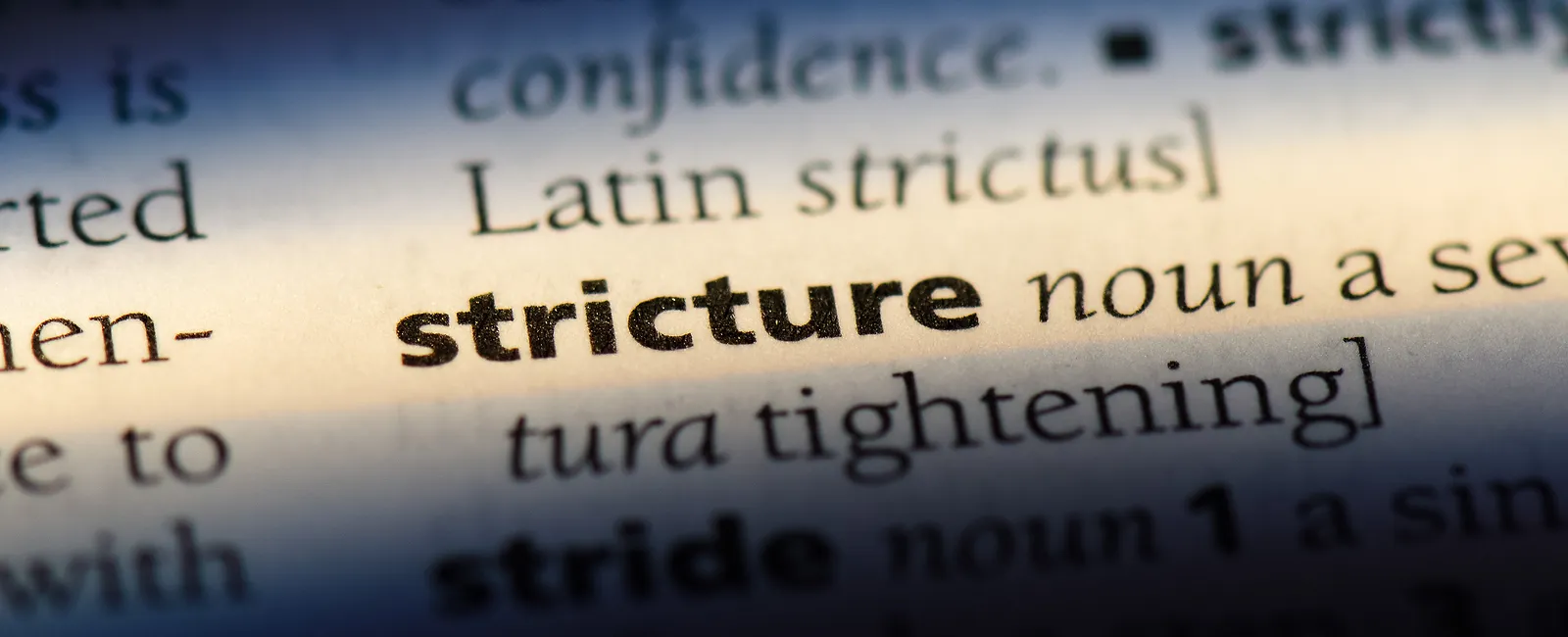Using the restroom is part of everyday life. But what happens when you suddenly can’t pee? Aside from being confusing and a little scary, the sudden difficulty or inability to urinate can be painful and lead to other serious complications like infection. Many conditions can cause difficulty with urination—from an enlarged prostate to a urinary tract infection to kidney stones. One lesser-known condition that can interfere with urination is urethral stricture. What is a urethral stricture? Keep reading to find out what it is, why it’s more common in men than women, and available treatment options.
What is a stricture?
A stricture is an abnormal tightening or narrowing of a passageway in your body.
What is the urethra?
Your urethra is the tube that carries urine from your bladder out of your body.
What is urethral stricture?
Urethral stricture occurs when your urethra becomes narrowed. Some men who have urethral stricture experience a gradual slowing of their urinary stream alongside increased discomfort while urinating. You may feel like you have to push or strain to get urine out of your body. Other men develop a sudden inability to urinate and require prompt medical attention.
What causes urethral stricture?
Urethral stricture is most commonly caused by a narrowing of the urethra due to scar tissue in the urethra. Males can have scar tissue form in the urethra from:
- An injury to the penis or scrotum
- An infection, usually from a sexually transmitted disease like chlamydia
- Placement and removal of catheters in the urethra during medical procedures
Why is urethral stricture more common in men?
Men are more likely to get urethral strictures than women because men have longer urethrae. A man’s urethra runs the length of his penis, posing more opportunity for injury, infection, and urethral stricture.
Urethral stricture is rare in women, children, and infants.
Symptoms of Urethral Stricture in Men
A mild urethral stricture may not cause any symptoms. As scar tissue builds up and a urethral stricture becomes severe enough to interfere with the flow of urine, symptoms will occur. Symptoms of urethral stricture include:
- Blood in urine (hematuria)
- Blood in semen
- Slow urine stream
- Pain with urination
- Abdominal pain
- Leaking urine
- Urinary tract infection
- Swelling of the penis
If you have a severe urethral stricture and are unable to urinate, this is called urinary retention and is a medical emergency. Immediate medical attention is necessary if you are unable to urinate.
Treatment Options of Urethral Stricture in Males
Urethral stricture cannot be treated with medication but there are effective treatment options available. A urologist is a doctor who specializes in problems of the urinary system and can help identify which treatment options are best for you. Possible treatments of urethral stricture include:
- Dilation. Your doctor will use a local anesthetic to numb the area prior to the procedure. Your doctor will gradually widen the stricture with a series of dilators called sounds. A catheter with a special balloon can also be used to dilate the urethra and widen the stricture. Dilation is not a cure and typically has to be repeated to keep the urethra open. If your stricture comes back too quickly, your doctor may teach you how to complete intermittent self-dilatation. For urethral stricture disease in males who have strictures that close quickly, self-dilation with a special catheter can be an effective urethral stricture treatment at home. Urethral stricture dilation side effects include bleeding, infection, and the chance of a secondary passage forming within the urethra due to stretching.
- Urethrotomy. Your doctor will guide a special scope, called a cystoscope, up your urethra until they reach the stricture. A laser at the end of the scope will cut the stricture and create a gap for urine to flow through. A catheter may be placed in the urethra to keep it open while it heals. Length of recovery depends on the size of the stricture.
- Open Surgery / Urethra Reconstruction. The two main types of surgery to treat urethral stricture are anastomotic urethroplasty and substitution urethroplasty. Anastomotic urethroplasty is typically used to treat short strictures. Anastomotic urethroplasty is usually performed as an outpatient procedure, meaning you can go home after surgery. After surgery, a small, soft catheter is left in the penis for 10 to 21 days until the urethra is healed. Substitution urethroplasty is used to treat long strictures. Substitution urethroplasty can be done as a free graft, skin flap, or staged. Urethral stricture surgery recovery time will vary based on which approach is used. With free graft and skin flap approaches, a short hospital stay is typical with a catheter being left in the urethra for 2 to 3 weeks. Staged urethral stricture surgery is organized into two stages, the first of which can take 3 months to a year for a graft to heal and mature. The second stage is completed several months after the graft has healed. The urethra will then return to normal, and a catheter will be placed in the urethra for 2 to 3 weeks.
Urethral stricture is a common problem in men that can cause pain and discomfort while urinating, but there is no need to suffer. Treatments are available. Schedule an appointment with a doctor to discuss your symptoms and learn about treatment options.

